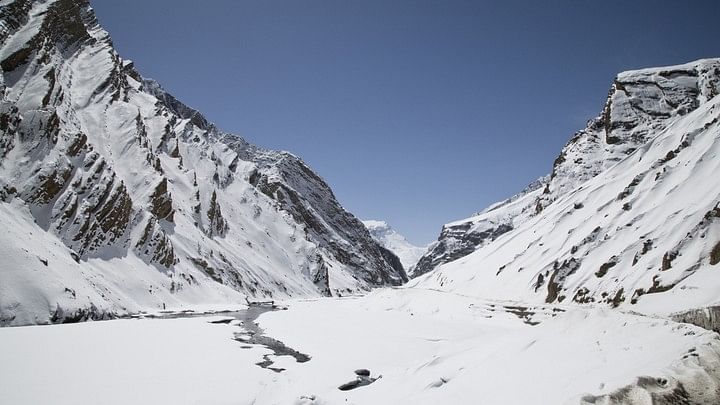
Image for representation only.
Credit: iStock Photo
Tropical glaciers have shrunk to their smallest size in more than 11,700 years, an Interesting Engineering article reported, quoting scientists from Boston College.
The statement says that the tropics have already warmed past limits last seen in the Holocene age.
The scientists analyzed rock samples sourced from four glaciers in the Andes Mountains in South America and found that the glaciers seemed to have melted beyond the amount of the expected acceleration rate.
"We have pretty strong evidence that these glaciers are smaller now than they have been any time in the past 11,000 years," Interesting Engineering quoted Jeremy Shakun, a professor at Boston College and co-author of the report.
“Given that modern glacier retreat is mostly due to rising temperatures – as opposed to less snowfall, or changes in cloud cover – our findings suggest the tropics have already warmed outside their Holocene range and into the Anthropocene,” he added.
Therefore, now the glaciers will be categorized as the Anthropocene instead of the Holocene interglacial period because the Anthropocene is a period of time during which human activities have caused a distinct geological change to the environment, the article states.
“This is the first large region of the planet where we have strong evidence that glaciers have crossed this important benchmark – it is a ‘canary in the coal mine’ for glaciers everywhere,” Shakun further said.
The samples for the study were collected from the Andean mountains’ tropical glaciers in the countries of Peru, Columbia, and Bolivia and the scientists travelled to South America to study the chemistry of the bedrock.
The article says that two rare isotopes – beryllium-10 and carbon-14 – build up in bedrock surfaces of the Andean mountains when they are exposed to cosmic radiation from outer space.
The measurement of these isotopes in exposed bedrock help in establishing time period of the exposure.
This “tells us how often the glaciers were smaller than today – kind of like how a sunburn can tell you how long someone was out in the sun,” the article quoted Shakun.
The team didn't really find beryllium-10 or radiocarbon-14 in any of the 18 bedrock samples that were measured in front of four tropical glaciers, the article noted.
“That tells us there was never any significant prior exposure to cosmic radiation since these glaciers formed during the last ice age,” Andrew Gorin, a PhD student at UC-Berkeley said.